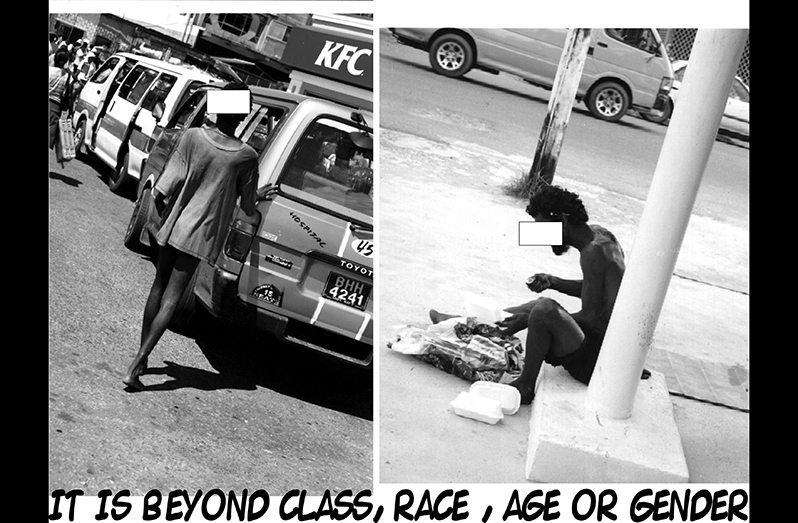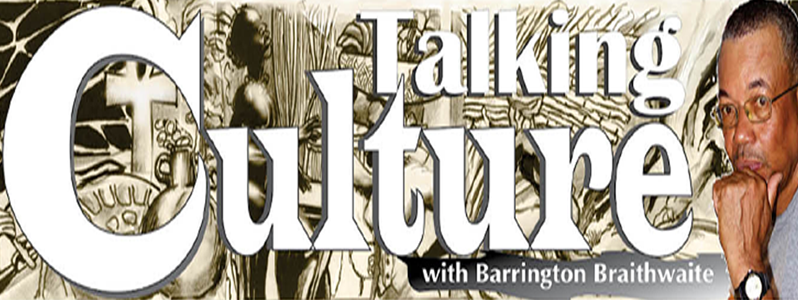–a timely intervention against the Gorgon’s Head of addiction
THE ‘one and afar’ addicts that entered our communities in the early 1970s were viewed as “weirdos”. We watched their antics with stoic amusement, but the closest interpretation was what we saw in the movies; Woodstock ‘hippie’ stuff. Not our thing; nor our problem, or so we thought.
The first deterioration I actually witnessed was a member of a West Ruimveldt family I knew well, whose son had ‘come back home’ from the ‘Big City’ around 1973-4. He wore those denim bell bottom pants and a full ‘Afro’. He would leave and head for town; and that was his business. Possibly to where the slick dude worked; nobody’s business. With time, it was difficult not to notice the change. Sometimes he was barefoot; the rest I need not mention, because it’s common knowledge now.
I’ve written about witnessing the rise of Rastafari, the Bag-tribe and the loss of sober consciousness that tripped so many, and the deaths that followed as a sub-culture evolved. There were ‘the Big Dreads’ and ‘the Queens’ by the mid-80s. Cocaine; ‘De Jumbie”, as it was called, was in transit from airfields in our interior. Inevitably, cocaine came to town, and soon, into the villages. The drug yards had taken shape, and Guyana was then under attack from within. Soon enough, the addicts followed, and, helplessly, most citizens looked the other way.
One of the first ambush killings involved a policeman who was the target. The authorities then set up special squads, as, with the cocaine came combat weapons, with scores to settle. The State was clueless as to how to handle this, as their special police squads were swept away by the flames of ‘New Money’, and became the watchdogs of the cocaine ‘Big-Man’ dem. Cocaine was rightfully called ‘the Jumbie’ or ‘the Demon’. It was not only the guilty (of deals gone bad) and their addicted victims who suffered, but innocent people: Parents, grandparents, relatives and neighbours who died at the hands of addicts mentally tortured and run berserk by cocaine. THC and ‘Frankenstein’, marijuana-like mind-altering drugs in Guyana have a significant death and trauma toll on its citizenry.
 FOUR DECADES ON
FOUR DECADES ON
Over four decades had to pass before our authorities came to terms that something had to be seriously done to address the severe crime-prone mentally affected population that drugs had created. Addiction had, like a horror movie, morphed a population of socially disabled and dangerous citizens, most of whom were in the prime of their youth. And, to crown it all, neither their parents nor their siblings had the financial or knowledge-based resources to contain their frightening habit. It was a tremendous personal struggle that required support that would drain ones resources until the only thing left to do was to tear oneself apart and abandon the task. The result is visible: Long-term addiction may very well have done too much damage to be corrected.
An addict in the family can break a family apart. An abandoned addict will be used for criminal purposes, or subtly enslaved to provide cheap labour by every callous business hustle. The Drug Yards had become an ‘Industry’, short of being taxed by the GRA. I’m not going to include the obvious bribes to many by the Drug Yards for services rendered to the devil’s own. How else could they have remained functioning for over 30 years?
But, in October 2019, something inspiring happened: The ceremonial ribbons were cut to officially declare open ‘The Drug Treatment Court’. I didn’t know what to make of it at first, but, in this column, I had penned some 25 articles on this subject over the years, outlining eyewitness and experienced accounts of this scourge. Thus, any action from the State was welcome. As I had stated before, after assembling dozens of photographs of ‘the drug scourge’, drug addiction became a part of my home through one of my own. I had written then President Granger suggesting an out-of- town ‘rehab’ facility somewhere in the North-West that would be half boot camp, half Youth Corps. Still, I would have my own experience with the Drug Court through my own in-house problem.
The structure of this facility was well constructed from the inception; its disciplines were driven to cultivate what I had learnt from the late Clarence Young of the Phoenix Recovery Project and others whom I knew have survived cocaine addiction. “Yuh got to want to stop de Jumbie brethren; yuh got to have the strength.” The Drug Court is the ‘Jiminy Cricket’ on the addict’s shoulder, and much more. I have the highest respect and admiration for its echelons. On visiting ‘Phoenix’ as a paying customer back in 2015, I was astonished to see a youngster not more than 12 years old; an addict. I was briefed on his story after enquiring about his presence there, so, with the current extension of ‘The Drug Court’ to include a ‘Juvenile Court’, I find this a natural and necessary development in this area of the national well-being.



.jpg)








